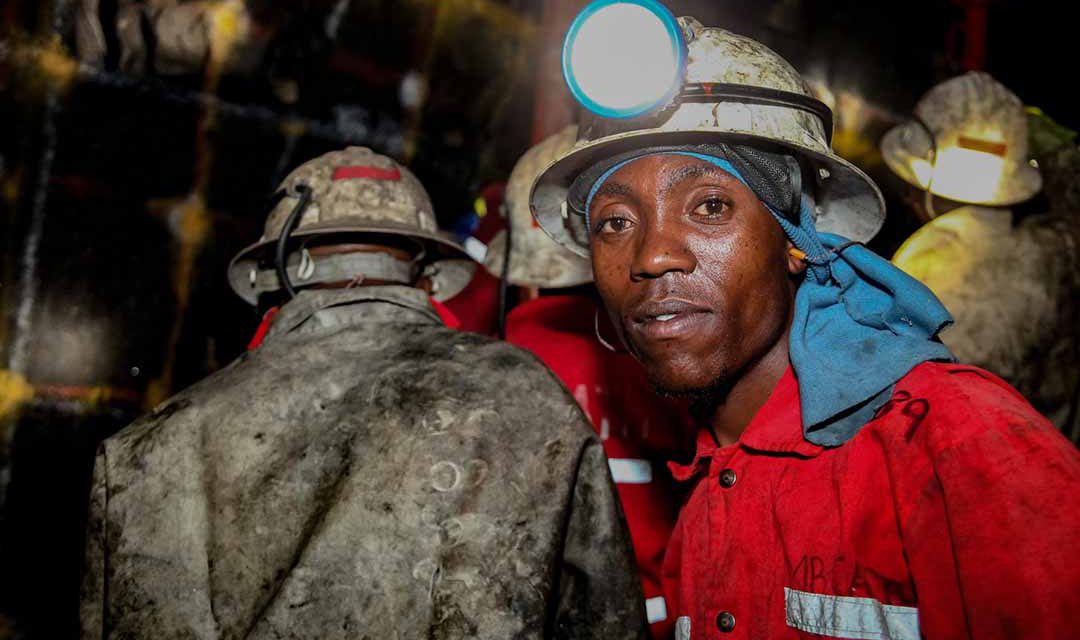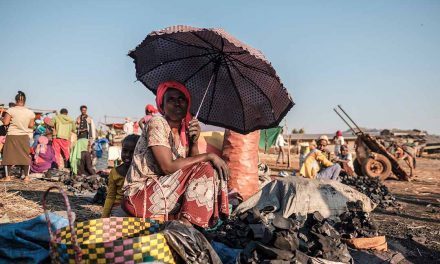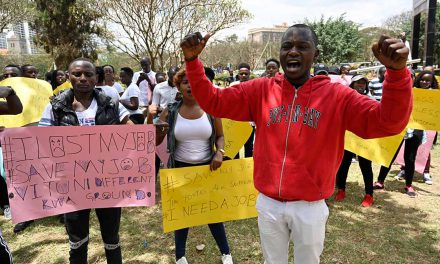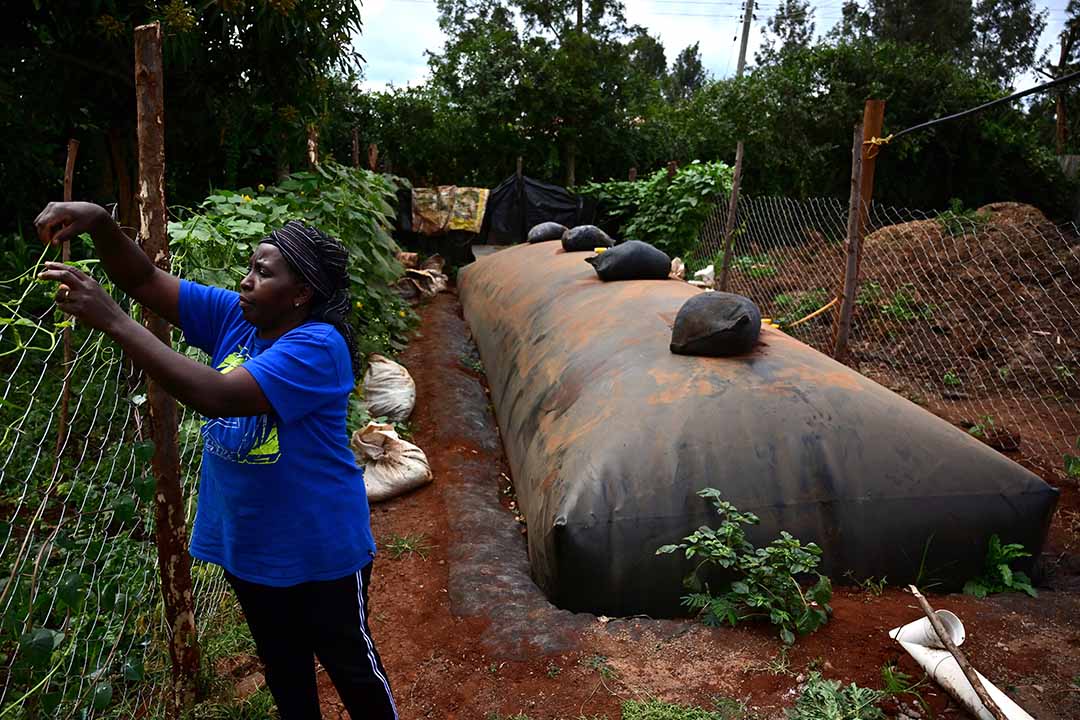SDG 8: Decent work and economic growth
The ogre of corruption looms over Africa, reducing the continent’s chance of meeting SDG 8 by 2030
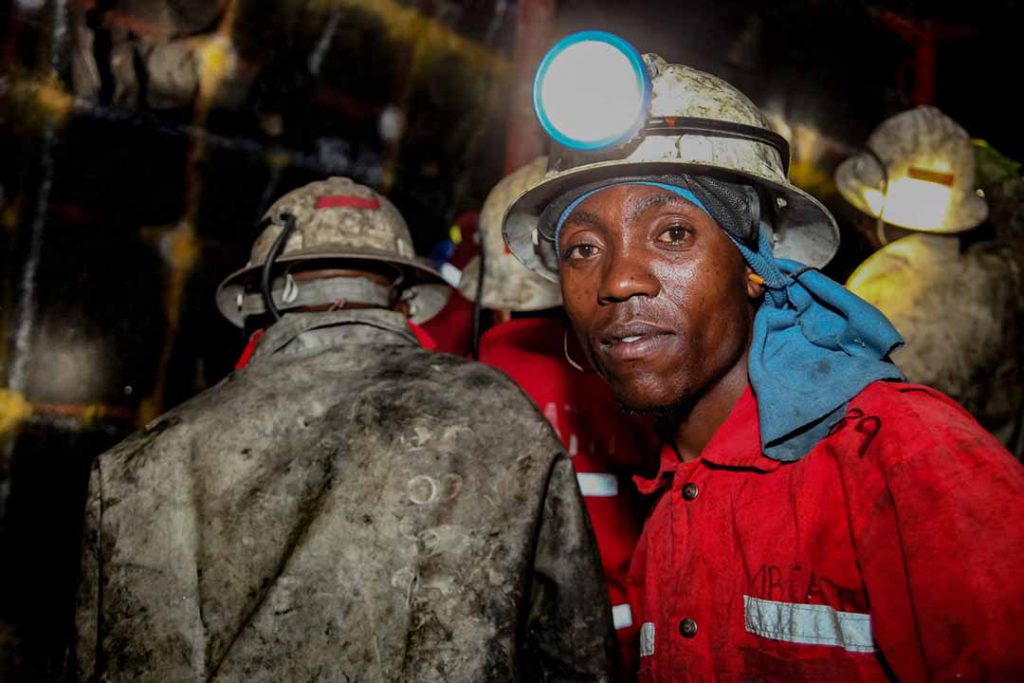
By Tom Osanjo
According to the UN Development Programme (UNDP), the Sustainable Development Goals (SDGs) are intended to promote sustained economic growth, higher levels of productivity and technological innovation around the world. The agency, which oversees the implementation of the SDGs, says that encouraging entrepreneurship and job creation are key to this, as well as effective measures to eradicate forced labour, slavery and human trafficking. With these targets in mind, SDG 8 (Decent work and economic growth) enjoins UN member states signatory to the Agenda 2030 for Sustainable Development to attain these goals for all women and men by 2030. However, the African continent has seen mixed results in pursuit of SDG 8. Whereas some countries have made good progress, others have not moved forward and there are various factors for this. Some evidence of increasing economic prosperity is included in a new study published in March by the London School of Hygiene and Tropical Medicine, the Imperial College London and the Malaria Atlas Project of the University of Oxford, which revealed that improved housing had doubled on the African continent between 2000 and 2015. “The prevalence of improved housing was highest in countries such Botswana, Gabon and Zimbabwe and lower in countries such as South Sudan. The researchers also found that the housing transition may be linked to economic development. Improved housing was 80% more likely among more educated households and twice as likely in the wealthiest households, compared to the least educated and poorest families,” they said.
The report added that the changes observed were “incredibly significant” because most households paid for these improvements from their own income and with little dependence on external financing. “From a public health perspective, this trend presents a massive opportunity for African governments to accelerate ongoing efforts against vector-borne diseases such as malaria, and to secure such gains for the long-term,” said Dr Fredros Okumu, director of science at Ifakara Health Institute in Tanzania, and a co-author of the study. He added that the results showed how relatively quickly Africa’s housing stock could be improved if the economic conditions were favourable. The continent’s premier banking institution, the African Development Bank (AfDB) seems to agree with Okumu. In its economic outlook for 2019 released in March this year, the AfDB disclosed that economic growth in East Africa was soaring ahead of other regions on the continent at close to 7%, while the overall outlook for the rest of Africa was cautious but positive. Job creation and ramping up manufacturing will continue to be major priority areas for creating growth and employment across the continent, various AfDB regional reports noted. “Growth in central Africa is gradually recovering but remains below the average for Africa as a whole. It is supported by recovering commodity prices and higher agricultural output. The region is one of the continent’s least integrated, with potential for reforms and greater linkages,” according to the bank report. The West Africa regional economic outlook report called on the region to explore innovative means of raising revenue through reforms that enhanced tax collection, minimised tax evasion, and curbed illicit financial flows.
West Africa’s GDP growth trailed the rate for Africa as a whole between 2014 and 2017, though it exceeded those of central and southern Africa, according to the report. Certain outlier countries bucked the downward trend, such as Cote d’Ivoire, Ghana and Senegal, it added. According to the bank, growth in southern Africa is expected to remain moderate in 2019 and 2020 after a modest recovery in 2017 and 2018. The subdued growth in the southern part of the continent was due mainly to economic stagnation in South Africa, the largest regional economy, which had a ripple effect on neighbouring countries. SDG 8’s “decent work” agenda includes job creation, social protection, social dialogue and workers’ rights, balanced against environmental, social and even economic sustainability. It remains a major challenge in Africa. Governments and businesses have been slow to embrace new approaches to employment creation and work policies. The International Labour Organisation (ILO) forecasts that unemployment will rise over the next five years, deepening already entrenched inequalities, because workers’ wages are too low to support demand. The Kenyan government, for instance, has not been keen on enforcing a minimum wage law due to claims that it would lead to job cuts by companies that contribute significantly to the exchequer. But the same government has been unable to clamp down on systemic corruption, which has forced it to rely on heavy internal and external borrowing to keep its budget afloat. Over the past three decades, Kenya has witnessed a gradual deregulation of its labour market, with the government muting its backing of trade unions and collective bargaining.
This has led to regular strikes by teachers, nurses and doctors, and university lecturers demanding better working conditions. The private sector has taken its cue from the government, undermining enrolment of workers in trade unions by hiring people on temporary contracts. This has weakened labour unions. And with wages falling or remaining stagnant, the government has been unable to increase domestic demand and ensure a more equal distribution of income. It is clear, therefore, that Kenya’s road to achieving SDG 8 will be uphill. The ILO has warned, rather ominously, that all African regions face similar risks to their economic prospects in 2019–20, including rising debt, fragility, population growth and climate change. But without the social justice and decent livelihoods offered by full and productive employment, African countries remain vulnerable to political uncertainty and even instability. These factors, in turn, result in unstable investment ecosystems. Governments will need to create conditions that force the private sector to embrace, not fight, collective bargaining and decent pay for its work force. Government policies, too, must take into account their impact on access to finance for those who need it. Examples of badly conceived legislation and regulations abound in Africa, from Zimbabwe’s “indigenisation” law to South Africa’s successive mining charters, both of which resulted in plummeting investment. A Kenyan example was a 2016 law curbing interest rates, which has seen banks ruthlessly locking out small- and-medium sized businesses from access to commercial loans.
The law was apparently politically motivated, with The Economist reporting that President Uhuru Kenyatta had come under considerable pressure to assent to it, even though most of the country’s banking industry objected. This law encouraged the growth of “shadow banking” and over-the-counter financial derivatives to fill the gap. An explosion of mobile lending apps and shady micro-finance firms – lending money at exorbitant costs to SMEs followed. Young people, the largest group of unemployed, are now borrowing money from lending apps such as Tala and Branch to invest in online gambling. The consequences are, unfortunately, predictable. In West Africa, the AfDB report said that among macroeconomic indicators, inflation – fuelled in part by expansionary fiscal policy and supply-side constraints – remains a challenge to investment and sustainable economic growth in the region. “Inflation rose sharply to 13% in 2017, before declining to 9.5% in 2018. It is projected to rise slightly in 2019 before levelling off, assuming sound management of monetary and fiscal policies and stable fuel and energy prices,” the report said. Unfair taxation and labour policies, an over reliance on export-oriented economies and poor governance – read: corruption – have seen an increase in national debt burdens and declines in standards of living across the continent, including Kenya. In the latter case, the International Monetary Fund (IMF) has raised concern over the level of debt the Kenyan government has taken on in an effort to bridge budget gaps over the past five years. Despite this, the country’s national treasury issued more sovereign debt to raise money to clear previously accrued debt – in effect robbing Peter to pay Paul.
The official economic growth rate remains just over 5%, but the benefits have not trickled down to the poor and unemployed, most of whom, as noted, are young people. Other factors contributing to the continent’s dismal economic performance can be traced to the lopsided exploitation of natural resources, according to the AfDB report. This was exacerbated by a lack of the necessary know-how. In April this year, Sierra Leone banned fishing in its ocean waters for a month to help increase fish populations. Its ministry of fisheries said that Mauritania, Senegal, Guinea, Gambia, Guinea Bissau and Sierra Leone had lost $2.3 million combined between 2006 to 2016 due to illegal fishing. The same situation prevails in DRC, where huge cargo planes land in Goma empty and leave heavily laden with timber and other resources from the Congo forest. It has often been alleged that many of these exports are never taxed. Where they are, it has frequently been observed that the “tax” ends up in the pockets of well-connected individuals and not in the national coffers, where it could be channelled to developmental efforts. Meanwhile, the ogre of corruption looms over Africa. Corruption has seen the siphoning of public funds intended for social and development projects into the pockets of politicians and their cronies, helping to create nations where most of the wealth is in the hands of a privileged minority. Three countries can be seen as “trendsetters” on the continent in this respect. In Nigeria, President Muhammadu Buhari suspended and later sacked Chief Justice Walter Samuel Nkanu Onnoghen on claims that he breached the code of conduct for public officials by failing to declare several foreign currency bank accounts.
Some observers claimed that the government was engaging in a “witchhunt” because it wanted to replace Justice Onnoghen with a more pliant person ahead of the elections. The chief justice’s influence can be crucial to the outcome of presidential elections where there is a dispute that lands up in court. As regards South Africa and so-called “state capture”, many people around the continent followed with bated breath the soap opera-like circumstances around Jacob Zuma’s government, which is alleged to have been influenced by the Gupta family. But if South Africans thought the Zuma exit would be the end of sticky tales of corruption, they were mistaken. In March this year, President Cyril Ramaphosa’s son Andile admitted that he was paid $140,000 by a company facing extensive corruption allegations, an admission that many said would embarrass his father ahead of polls in May. As it turned out, it didn’t: a series of allegations of extensive abuses of power by other senior leaders of the world’s oldest liberation movement and connected insiders only served to distract attention from Ramaphosa. In Kenya, Deputy President William Ruto is coming under increased scrutiny following claims that the millions of shillings he donates to churches every Sunday are the proceeds of corruption. Egg-faced church leaders are deflecting attacks that they have been complicit in the looting of public coffers by politicians, who use their pulpits to clean dirty money. Meanwhile, the New York trial of a Kenyan drug baron, Baktash Akasha, who has been found guilty of conspiring to import heroin into the United States and accused of extensive bribery in Kenya, has seen the country profiled as a place where “everybody from the lowliest cop to the top judges [is] on the take”.
Given this, what are the prospects of significant improvements to achieving SDG 8 around Africa? Not good, it would appear. According to the 2018 Africa SDG Index and Dashboards report, no country in northern Africa is on track, with Mauritania regressing and Algeria, Libya, Mauritania, Morocco and Tunisia all off-track. In East Africa, the picture gets worse: five countries – Burundi, Comoros, Somalia, South Sudan and Sudan – are regressing, while six countries are offtrack: Djibouti, Eritrea, Ethiopia, Rwanda, Tanzania and Uganda. In East Africa only one country – Kenya, as it happens – is on track. The picture for southern Africa is only slightly more rosy, if at all. Four countries – Angola, eSwatini, Malawi and South Africa – are regressing, while seven – Botswana, Lesotho, Mozambique, Namibia, São Tomé and Príncipe, Zambia and Zimbabwe – are all off-track. Only one country in southern Africa, Mauritius, is on track to achieve SDG 8 by 2030. The dashboard for the continent as a whole reveals that some 30 countries on the continent are off-track to achieving SDG 8, while 19 are regressing. Only three are making progress. No data is available for Somalia. Unfortunately, these figures indicate that the prospects of significant improvements with regard to SDG 8 are poor at best.
Tom Osanjo is a Kenyan journalist working with an INGO in Nairobi. He was the 2009 Joel Belz International Media Fellow and the 2017 Coaching and Leadership Fellow, which is a programme offered by The Media Project and the Poynter Institute. His works have been published around the world, and when he is not working, Tom is engaged in church activities and supporting Gor Mahia Football Club. He can be reached on tomosanjo@yahoo.com

